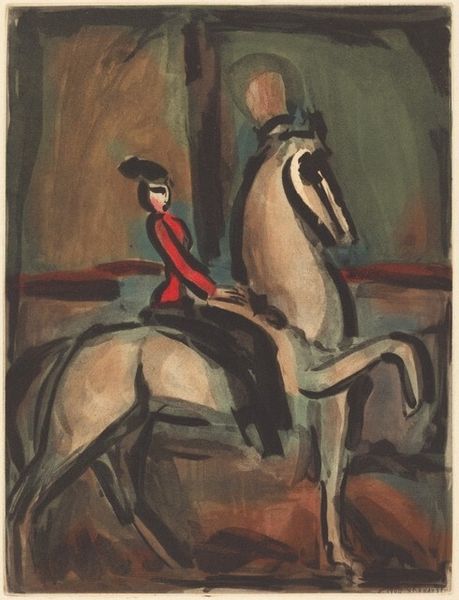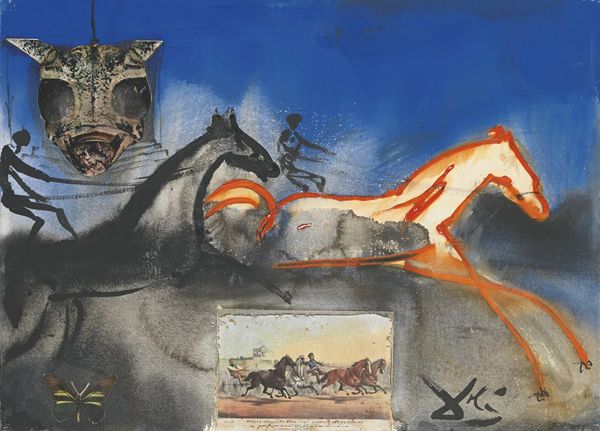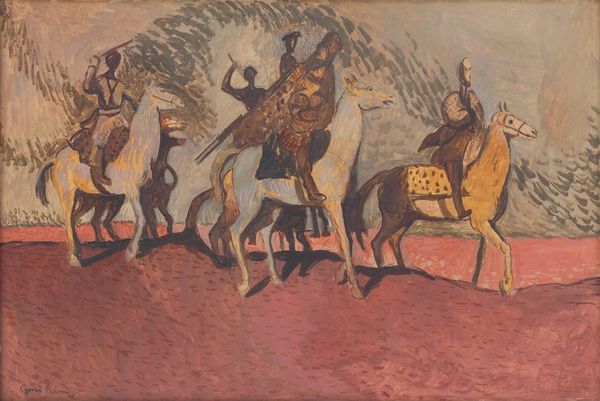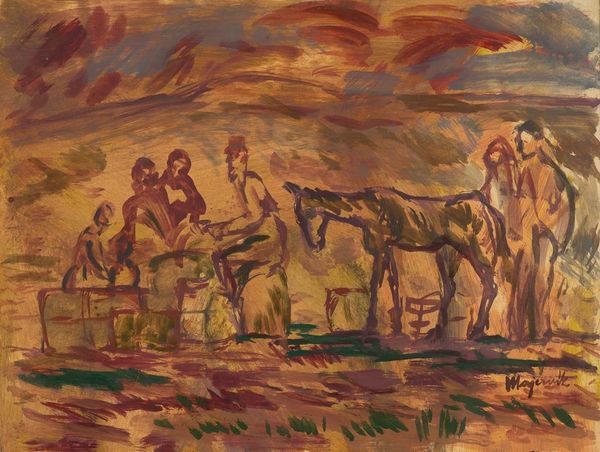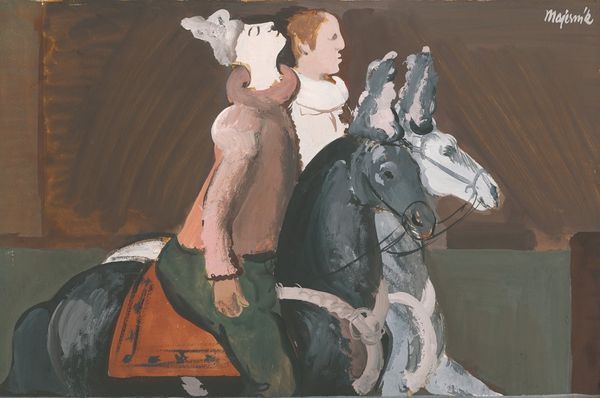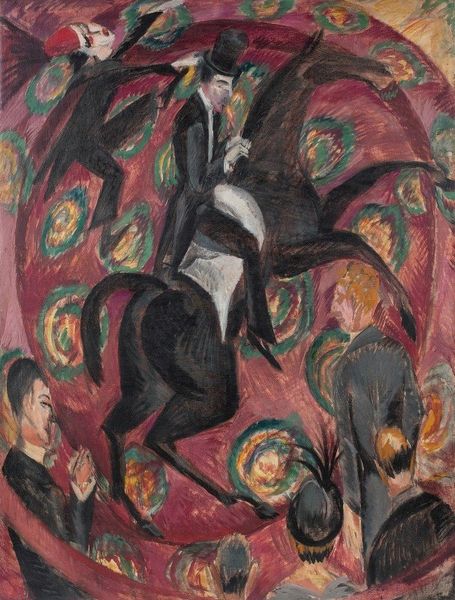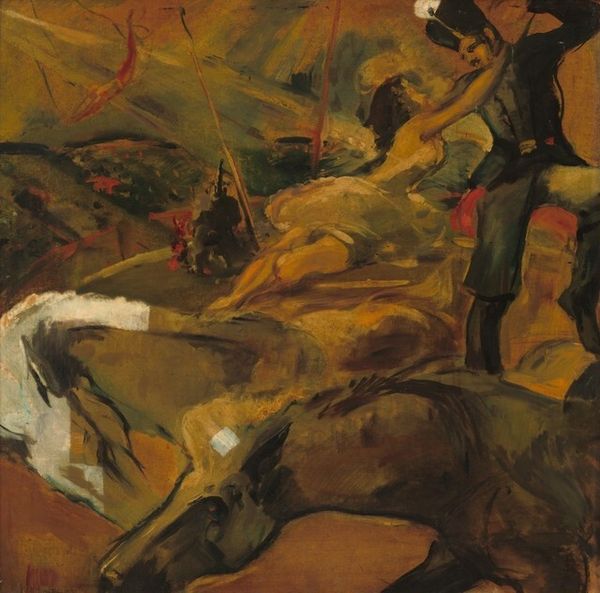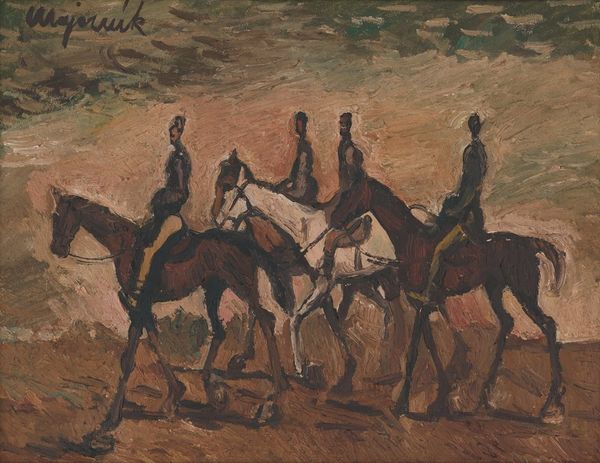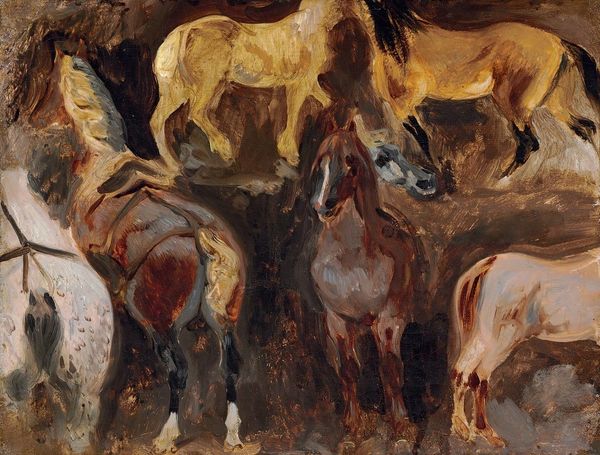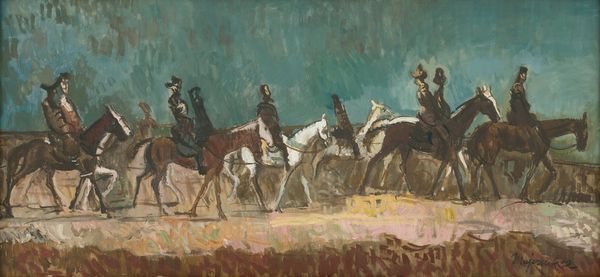
Copyright: Public Domain: Artvee
Curator: The painting before us, "Fire – Refugees," was completed in 1938 by Cyprián Majerník, crafted with oil paint. Editor: My immediate reaction is…anxiety. The fiery background and distressed figures—it all speaks of impending doom, wouldn’t you agree? Curator: Absolutely. Notice how Majerník employs an Expressionistic style. The figures, human and animal, appear strained and elongated. Look at the almost brutal brushstrokes, particularly in that sky. Editor: Those colors! The reds and browns dominating the palette—they feel suffocating, almost like the air is thick with smoke and ash. I'm curious about Majerník's personal context at this time. Curator: This was painted on the cusp of World War II. Majerník, being Slovak, was keenly aware of the escalating tensions in Europe and the plight of those displaced. The figures, representing refugees, mirror the social upheaval and moral panic taking hold. Even the horses, wild-eyed and seemingly attempting to flee, echo the fear of the time. Editor: Animals have always been powerful symbols. I agree; here, the horses embody the instinctive, primal drive for survival when civilization breaks down. They are often depicted that way when they act as conveyers, for carrying people out of perilous situations. Curator: Yes. The symbolism resonates with archetypal themes. You see the nuclear family huddling close together against the threat in the sky. It also evokes potent iconographies like the Flight into Egypt. Majerník is tapping into centuries of shared visual language to evoke the devastation of conflict and its impact on common people. Editor: Do you feel it has a propaganda purpose at all, maybe meant as a warning? Curator: Perhaps not a deliberate "propaganda," but rather a somber commentary. It's a lament for lost innocence and a premonition of further suffering. Art like this serves as an archive, expressing how it felt to witness social unraveling in real time. Editor: I'm leaving here considering just how relevant this almost century-old artwork feels even now, and it certainly provides something to contemplate as we navigate an ever-shifting world. Curator: I agree. Ultimately, I see Majerník giving pictorial expression to his own moral stance: standing in solidarity with those displaced. And in so doing, reminds us to not avert our gaze.
Comments
No comments
Be the first to comment and join the conversation on the ultimate creative platform.

